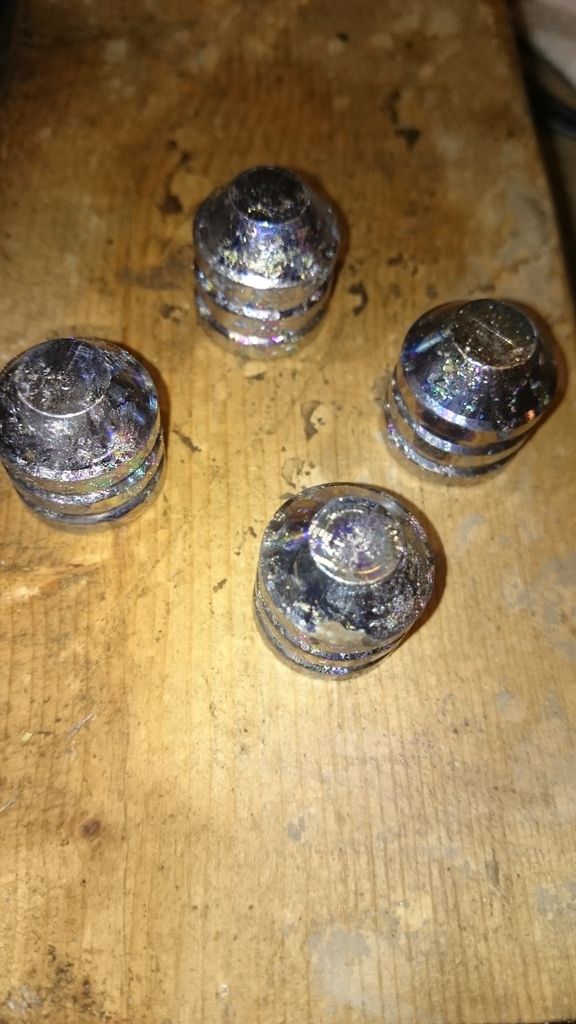I'm new to bullet casting, however, I had been casting trouble free for some time. I just used whatever lead I could find, never worried too much about anything. So I decided to really take the plunge, and bought another Lee pot, this one a 20 pound bottom pour, some "custom" molds, and lead from rotometals. Today I decided to try out the new lee pot for the first time, and wanted to try Lee REAL .50 320 grain bullets for the muzzleloader. I had casted these in the past with good results, accurate too, however, they were too hard, and as a result, very difficult to load. Lee recommends pure lead for these, so that's what I used. Pure lead from rotometals. I plugged in the pot on max heat, added lead, and once melted, I put in a bit of beeswax for flux. I see a lot of people say to drop in a match to stop the smoke, I just walked off and let it smoke for 5 minutes. I was casting on heat setting 6, but do not have a thermometer. After the mold got hot, I quickly ran out 50 good bullets, no problems. I decided to try a new Accurate mold, a 770 grain 12 gauge bullet. When I came back, I noticed the top of the lead was covered in an orange/yellow powder. I let it be as I tried to cast some shotgun slugs. I was not getting a good result, and the nozzle was plugging up. I skimmed the top as best I could, and fluxed it again, but the nozzle was plugging too fast to get a good pour. I used wire to clear it, but it wouldn't even go 5 seconds. I turned the pot on max heat. The lead just kept building up this powder ****. By the end I had casted over 100 bad shotgun slugs, and skimmed probably 3 pounds of the powder. I skimmed it good, and poured ingots as fast as I could. When it was empty, and scrapped the sides of the pot, but its really stuck to the sides. I can't find anything about it in the Lyman casting book or online. I would really appreciate some help.
Here are some of the better shotgun slugs, you can see it looks like some of that powder is actually in the lead.


|
   
   
|


|






 Reply With Quote
Reply With Quote





 Chill Wills
Chill Wills














